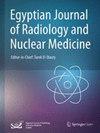Explainability, transparency and black box challenges of AI in radiology: impact on patient care in cardiovascular radiology
IF 0.5
Q4 RADIOLOGY, NUCLEAR MEDICINE & MEDICAL IMAGING
Egyptian Journal of Radiology and Nuclear Medicine
Pub Date : 2024-09-13
DOI:10.1186/s43055-024-01356-2
引用次数: 0
Abstract
The integration of artificial intelligence (AI) in cardiovascular imaging has revolutionized the field, offering significant advancements in diagnostic accuracy and clinical efficiency. However, the complexity and opacity of AI models, particularly those involving machine learning (ML) and deep learning (DL), raise critical legal and ethical concerns due to their "black box" nature. This manuscript addresses these concerns by providing a comprehensive review of AI technologies in cardiovascular imaging, focusing on the challenges and implications of the black box phenomenon. We begin by outlining the foundational concepts of AI, including ML and DL, and their applications in cardiovascular imaging. The manuscript delves into the "black box" issue, highlighting the difficulty in understanding and explaining AI decision-making processes. This lack of transparency poses significant challenges for clinical acceptance and ethical deployment. The discussion then extends to the legal and ethical implications of AI's opacity. The need for explicable AI systems is underscored, with an emphasis on the ethical principles of beneficence and non-maleficence. The manuscript explores potential solutions such as explainable AI (XAI) techniques, which aim to provide insights into AI decision-making without sacrificing performance. Moreover, the impact of AI explainability on clinical decision-making and patient outcomes is examined. The manuscript argues for the development of hybrid models that combine interpretability with the advanced capabilities of black box systems. It also advocates for enhanced education and training programs for healthcare professionals to equip them with the necessary skills to utilize AI effectively. Patient involvement and informed consent are identified as critical components for the ethical deployment of AI in healthcare. Strategies for improving patient understanding and engagement with AI technologies are discussed, emphasizing the importance of transparent communication and education. Finally, the manuscript calls for the establishment of standardized regulatory frameworks and policies to address the unique challenges posed by AI in healthcare. By fostering interdisciplinary collaboration and continuous monitoring, the medical community can ensure the responsible integration of AI into cardiovascular imaging, ultimately enhancing patient care and clinical outcomes.放射学人工智能的可解释性、透明度和黑箱挑战:对心血管放射学患者护理的影响
人工智能(AI)与心血管成像技术的结合给这一领域带来了革命性的变化,在诊断准确性和临床效率方面取得了显著进步。然而,人工智能模型的复杂性和不透明性,尤其是那些涉及机器学习(ML)和深度学习(DL)的模型,由于其 "黑箱 "性质,引发了严重的法律和伦理问题。针对这些问题,本手稿对心血管成像领域的人工智能技术进行了全面评述,重点关注黑盒现象带来的挑战和影响。我们首先概述了人工智能的基本概念,包括 ML 和 DL,以及它们在心血管成像中的应用。手稿深入探讨了 "黑箱 "问题,强调了理解和解释人工智能决策过程的困难。这种缺乏透明度的情况给临床接受和伦理应用带来了重大挑战。讨论随后延伸到人工智能不透明所涉及的法律和伦理问题。文章强调了可解释的人工智能系统的必要性,并着重强调了 "有利 "和 "无弊 "的伦理原则。手稿探讨了潜在的解决方案,如可解释的人工智能(XAI)技术,其目的是在不牺牲性能的情况下为人工智能决策提供见解。此外,还探讨了人工智能可解释性对临床决策和患者预后的影响。手稿主张开发混合模型,将可解释性与黑盒系统的先进功能结合起来。稿件还主张加强对医疗保健专业人员的教育和培训计划,使他们掌握有效利用人工智能的必要技能。患者参与和知情同意被认为是在医疗保健领域合乎道德地部署人工智能的关键要素。文中讨论了提高患者对人工智能技术的理解和参与的策略,强调了透明沟通和教育的重要性。最后,手稿呼吁建立标准化的监管框架和政策,以应对人工智能在医疗保健领域带来的独特挑战。通过促进跨学科合作和持续监测,医学界可以确保将人工智能负责任地融入心血管成像,最终提高患者护理和临床效果。
本文章由计算机程序翻译,如有差异,请以英文原文为准。
求助全文
约1分钟内获得全文
求助全文
来源期刊

Egyptian Journal of Radiology and Nuclear Medicine
Medicine-Radiology, Nuclear Medicine and Imaging
CiteScore
1.70
自引率
10.00%
发文量
233
审稿时长
27 weeks
 求助内容:
求助内容: 应助结果提醒方式:
应助结果提醒方式:


